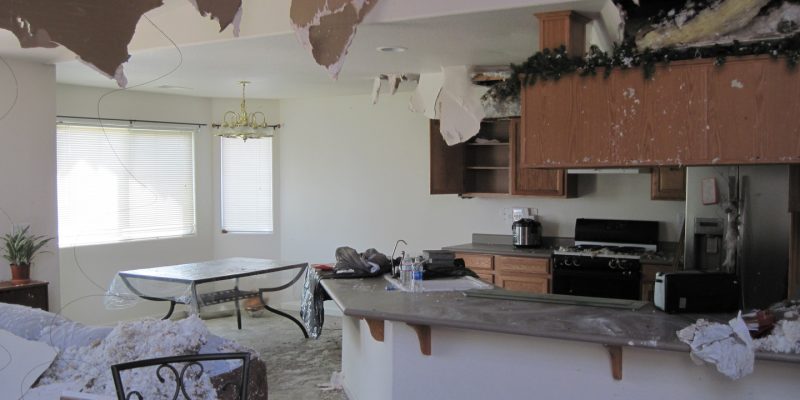What are your opinions on Simple Solutions To Preventing Fire And Water Damage To Your Home?

Though water provides life, water intrusion on components where it's not intended to be can result in damage. It can peel off away surfaces and also erode the foundation if the water saturates right into your structure. Mold and mildew as well as mold additionally prosper in a damp atmosphere, which can be unsafe for your health. Houses with water damages smell old and stuffy.
Water can come from lots of sources such as tropical cyclones, floodings, ruptured pipelines, leakages, and also sewage system problems. In case you experience water damage, it would be good to know some safety precautions. Below are a couple of standards on exactly how to take care of water damage.
Do Prioritize House Insurance Coverage Coverage
Water damage from flood dues to hefty winds is seasonal. Nonetheless, you can additionally experience a sudden flooding when a malfunctioning pipe all of a sudden bursts into your residence. It would be best to have home insurance coverage that covers both acts of God such as natural calamities, and emergency situations like damaged plumbing.
Do Not Forget to Turn Off Utilities
In the event of a catastrophe, especially if you live in a flood-prone location, it would be advisable to switch off the primary electrical circuit. This removes power to your whole residence, protecting against electrical shocks when water comes in as it is a conductor. Do not neglect to turn off the major water line valve. When floodwaters are high, furniture will walk around as well as cause damages. Having the main valve shut down avoids more damage.
Do Keep Proactive and also Heed Weather Condition Signals
Listen to discharge warnings if you live near a creek, lake, or river . Doing so reduces possible residential or commercial property damages.
Don't Disregard the Roofing System
Prior to the climate transforms terrible, make sure you have a roof covering inspection. It would certainly be sensible to receive this solution every year as it can reduce intricate issues. You can stay clear of rainfall damages if there are no holes and leaks in your roofing. Your roofing contractor will also deal with faulty seamless gutters or any other indicators of weakening. This will certainly avoid water from streaming down your walls and also soaking your ceiling.
Do Take Notice Of Little Leakages
A burst pipeline doesn't take place overnight. Normally, there are red flags that suggest you have deteriorated pipelines in your home. As an example, you may observe bubbling paint, peeling wallpaper, water touches, water stains, or leaking audios behind the walls. Ultimately, this pipeline will certainly burst. Ideally, you need to not wait for things to rise. Have your plumbing fixed before it leads to large damages.
Don't Panic in Case of a Burst Pipe
When it comes to water damages, timing is essential. Thus, if a pipeline ruptureds in your house, right away shut off your major water shutoff to cut off the source. Call a reliable water damages repair expert for assistance.
Water offers life, water invasion on parts where it's not intended to be can result in damages. Homes with water damages odor old and stuffy.
Water damage from flooding dues to hefty winds is seasonal. You may notice gurgling paint, peeling wallpaper, water touches, water stains, or trickling sounds behind the wall surfaces. When it comes to water damage, timing is vital.
Some Do's & Don't When Dealing with a Water Damage
DO:
Make sure the water source has been eliminated. Contact a plumber if needed. Turn off circuit breakers supplying electricity to wet areas and unplug any electronics that are on wet carpet or surfaces Remove small furniture items Remove as much excess water as possible by mopping or blotting; Use WHITE towels to blot wet carpeting Wipe water from wooden furniture after removing anything on it Remove and prop up wet upholstery cushions for even drying (check for any bleeding) Pin up curtains or furniture skirts if needed Place aluminum foil, saucers or wood blocks between furniture legs and wet carpet Turn on air conditioning for maximum drying in winter and open windows in the summer Open any drawers and cabinets affected for complete drying but do not force them open Remove any valuable art objects or paintings to a safe, dry place Open any suitcases or luggage that may have been affected to dry, preferably in sunlight Hang any fur or leather goods to dry at room temperature Punch small holes in sagging ceilings to relieve trapped water (don't forget to place pans beneath!); however, if the ceiling is sagging extremely low, stay out of the room and we'll take care of it DO NOT:
Leave wet fabrics in place; dry them as soon as possible Leave books, magazines or any other colored items on wet carpets or floor Use your household vacuum to remove water Use TV's or other electronics/appliances while standing on wet carpets or floors; especially not on wet concrete floors Turn on ceiling fixtures if the ceiling is wet Turn your heat up, unless instructed otherwise

I ran across that entry about Preventing Fires and Water Damage In Your Home while doing a search on the internet. If you appreciated our blog post kindly remember to share it. Kudos for your time. Don't hesitate to check our website back soon.